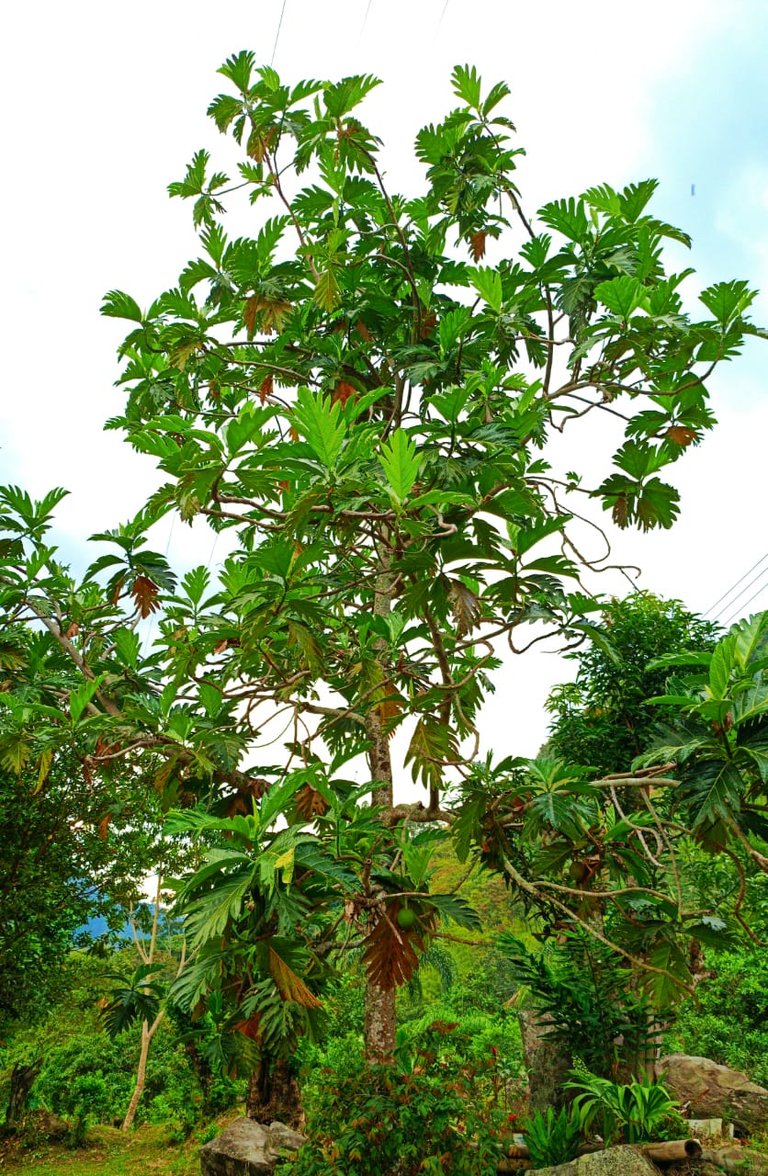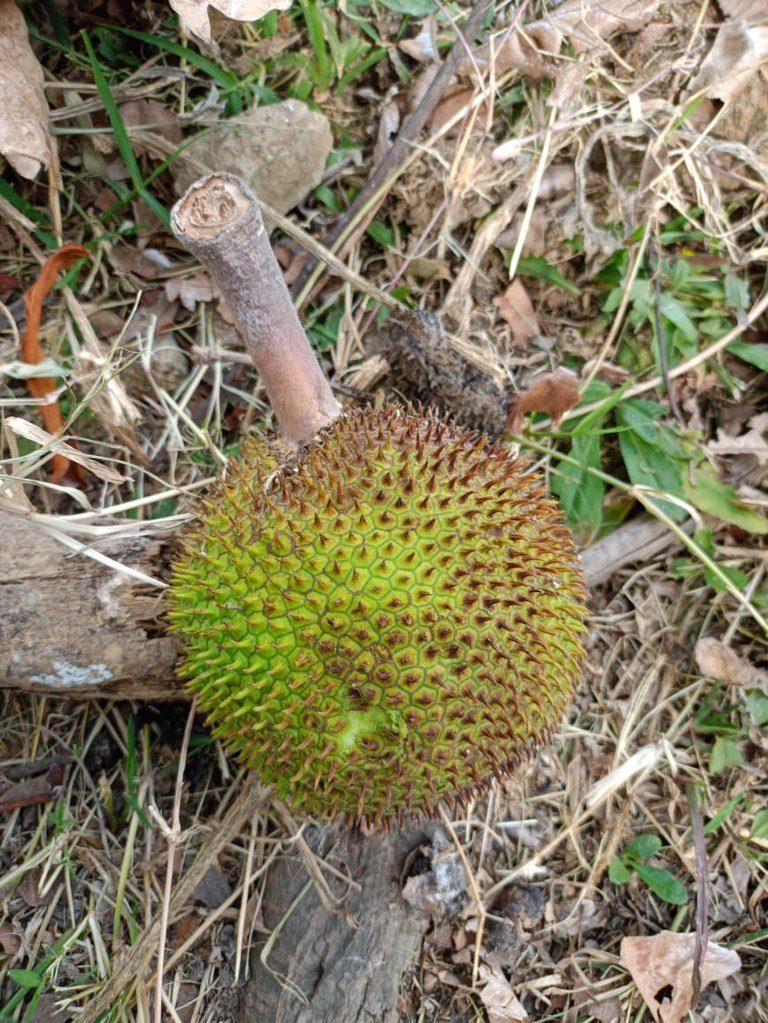El Árbol del Pan: Artocarpus altilis, un Tesoro Botánico y Cultural en Colombia
El Árbol del Pan: Artocarpus altilis, un Tesoro Botánico y Cultural en Colombia
El árbol del pan, conocido científicamente como Artocarpus altilis, es una especie tropical de gran relevancia tanto desde el punto de vista botánico como cultural y agroecológico. Originario de las regiones del Pacífico, este árbol ha encontrado en Colombia un ambiente propicio para su cultivo e integración en sistemas de producción sostenibles, convirtiéndose en un valioso recurso para la seguridad alimentaria y la conservación del conocimiento ancestral.
1. Introducción
El Artocarpus altilis, popularmente denominado árbol del pan, destaca por su versatilidad y adaptabilidad en climas tropicales. En Colombia, su presencia ha ido en aumento dentro de proyectos agroecológicos y sistemas agroforestales, donde se valora su aporte nutricional, ecológico y cultural. Su fruto, de textura y sabor peculiar, ha sido aprovechado durante generaciones, convirtiéndose en un elemento de identidad en comunidades que aprecian la diversidad biocultural.
2. Descripción Botánica
El árbol del pan pertenece a la familia de las Moráceas y presenta características morfológicas que lo distinguen:
Morfología y Crecimiento:
- Puede alcanzar alturas de 25 a 30 metros en condiciones óptimas, aunque en sistemas agroforestales y de cultivo controlado suele mantenerse a una estatura más moderada.
- Posee un tronco robusto, con corteza rugosa y ramas que se extienden formando una copa densa, ideal para ofrecer sombra a cultivos intercalados.
Hojas e Inflorescencias:
- Sus hojas, de forma ovalada y perennes, son de color verde intenso y contribuyen a la capacidad fotosintética del árbol.
- Produce inflorescencias masculinas y femeninas, lo que favorece la polinización cruzada y la formación de sus grandes frutos.
Fruto:
- El fruto, que da origen a su nombre popular, tiene una textura similar al pan al madurar.
- Se caracteriza por una piel gruesa y una pulpa rica en carbohidratos, fibra, vitaminas y minerales, siendo un alimento energético y versátil en la cocina tropical.
3. Distribución y Cultivo en Colombia
Aunque originario de Oceanía y las islas del Pacífico, el árbol del pan ha sido introducido en diversas regiones tropicales del mundo, incluida Colombia. Su cultivo se ha establecido principalmente en zonas con clima cálido y alta humedad, como las regiones costeras y algunas áreas del Pacífico colombiano.
Sistemas Agroforestales y Diversificación:
- En Colombia, el árbol del pan se integra a sistemas agroecológicos que promueven la diversificación de cultivos y la conservación de la biodiversidad.
- Su capacidad para crecer en asociación con otras especies favorece la creación de microclimas y la mejora de la calidad del suelo, contribuyendo a la reducción de la erosión y a la regeneración de áreas degradadas.
Manejo Sostenible:
- Los agricultores y comunidades locales han adoptado prácticas de cultivo tradicionales que combinan saberes ancestrales con técnicas modernas, asegurando la sostenibilidad del recurso y su aprovechamiento en beneficio de la seguridad alimentaria.
4. Importancia Agroecológica
El árbol del pan desempeña un papel esencial en los sistemas agroecológicos por diversas razones:
Conservación de la Biodiversidad:
- Su cultivo en sistemas mixtos ayuda a preservar la diversidad genética y de especies en los paisajes agrícolas, generando un entorno más resiliente ante plagas y enfermedades.
Servicios Ecosistémicos:
- Ofrece sombra y protección para cultivos de ciclo corto, favoreciendo la retención de humedad y la regulación de la temperatura en el suelo.
- Contribuye a la captura de carbono y a la mitigación del cambio climático, aspectos cruciales en la agroecología moderna.
Adaptabilidad y Resiliencia:
- Su capacidad de adaptación a distintos tipos de suelo y condiciones climáticas lo convierte en un recurso estratégico frente a los retos que impone la variabilidad del clima y la necesidad de sistemas alimentarios sostenibles.
5. Importancia Cultural en Colombia
Más allá de sus beneficios ecológicos, el árbol del pan posee un profundo significado cultural en diversas comunidades:
Patrimonio Gastronómico:
- El fruto del árbol del pan se utiliza en una variedad de preparaciones culinarias, que van desde platos tradicionales hasta innovadoras recetas que buscan rescatar la identidad tropical.
- Su versatilidad permite que sea consumido en distintas etapas de maduración, adaptándose a recetas que van desde frituras hasta preparaciones asadas o hervidas.
Saber Ancestral y Tradición:
- La transmisión de conocimientos sobre el cultivo y el uso del árbol del pan ha pasado de generación en generación, integrándose en festividades, rituales y en la memoria colectiva de las comunidades rurales.
- En un contexto de globalización, este árbol se erige como símbolo de resistencia cultural y de la importancia de conservar prácticas agrícolas tradicionales que respetan el medio ambiente.
Proyectos de Desarrollo Rural:
- Diversas iniciativas de agricultura sostenible en Colombia han incorporado el cultivo del árbol del pan como parte de estrategias para fortalecer la economía local, promover la soberanía alimentaria y generar conciencia sobre la conservación de la biodiversidad.
6. Desafíos y Perspectivas Futuras
A pesar de sus múltiples beneficios, el aprovechamiento del árbol del pan en Colombia enfrenta desafíos como la necesidad de mayor difusión de sus propiedades, la consolidación de mercados para sus derivados y la protección frente a cambios ambientales adversos. La investigación y la extensión agronómica son fundamentales para mejorar las prácticas de cultivo, asegurar la calidad genética del material vegetal y ampliar su presencia en nuevos sistemas de producción.
Las perspectivas a futuro se centran en:
- Innovación Agrícola: Integrar técnicas de manejo sostenible que potencien la productividad sin sacrificar la biodiversidad.
- Conservación y Revalorización: Fortalecer políticas públicas y programas de capacitación que reconozcan el valor cultural y ecológico del árbol del pan.
- Mercado y Economía Local: Impulsar cadenas de valor que permitan a los productores obtener mejores beneficios económicos y promover el consumo responsable de este recurso.
7. Conclusiones
El Artocarpus altilis es mucho más que un árbol frutal tropical; es un elemento vital en la intersección entre la botánica, la cultura y la agroecología en Colombia. Su integración en sistemas agroforestales no solo refuerza la seguridad alimentaria y la resiliencia ecológica, sino que también preserva tradiciones y saberes ancestrales. En un contexto global de cambio climático y pérdida de biodiversidad, la promoción y el manejo sostenible del árbol del pan se presentan como estrategias clave para un desarrollo rural inclusivo y sostenible.

Foto: @arangoaqet
The Breadfruit Tree: Artocarpus altilis, a Botanical and Cultural Treasure in Colombia
The breadfruit tree, scientifically known as Artocarpus altilis, is a tropical species of great importance from both a botanical and cultural-agroecological perspective. Originally from the Pacific regions, this tree has found in Colombia a favorable environment for its cultivation and integration into sustainable production systems, becoming a valuable resource for food security and the preservation of ancestral knowledge.
1. Introduction
Artocarpus altilis, popularly known as the breadfruit tree, stands out for its versatility and adaptability in tropical climates. In Colombia, its presence has been increasing within agroecological projects and agroforestry systems, where its nutritional, ecological, and cultural contributions are highly valued. Its fruit, with its unique texture and flavor, has been used for generations, becoming an element of identity in communities that appreciate biocultural diversity.
2. Botanical Description
The breadfruit tree belongs to the Moraceae family and displays morphological characteristics that distinguish it:
Morphology and Growth:
- It can reach heights of 25 to 30 meters under optimal conditions, although in agroforestry systems and controlled cultivation it is usually maintained at a more moderate height.
- It has a robust trunk with a rough bark and branches that extend to form a dense canopy, which is ideal for providing shade to intercropped species.
Leaves and Inflorescences:
- Its leaves, which are oval-shaped and evergreen, have an intense green color and contribute to the tree’s photosynthetic capacity.
- The tree produces both male and female inflorescences, which promotes cross-pollination and the development of its large fruits.
Fruit:
- The fruit, from which its common name is derived, has a bread-like texture when ripe.
- It is characterized by a thick skin and a pulp rich in carbohydrates, fiber, vitamins, and minerals, making it an energetic and versatile food in tropical cuisine.
3. Distribution and Cultivation in Colombia
Although native to Oceania and the Pacific Islands, the breadfruit tree has been introduced in various tropical regions around the world, including Colombia. Its cultivation has been established primarily in areas with warm climates and high humidity, such as the coastal regions and some areas of the Colombian Pacific.
Agroforestry Systems and Diversification:
- In Colombia, the breadfruit tree is integrated into agroecological systems that promote crop diversification and biodiversity conservation.
- Its ability to grow in association with other species helps create microclimates and improves soil quality, contributing to the reduction of erosion and the regeneration of degraded areas.
Sustainable Management:
- Farmers and local communities have adopted traditional cultivation practices that combine ancestral knowledge with modern techniques, ensuring the sustainable use of this resource and its contribution to food security.
4. Agroecological Importance
The breadfruit tree plays a crucial role in agroecological systems for several reasons:
Biodiversity Conservation:
- Its cultivation in mixed systems helps preserve genetic diversity and species variety in agricultural landscapes, creating an environment more resilient to pests and diseases.
Ecosystem Services:
- The tree offers shade and protection for short-cycle crops, promoting moisture retention and temperature regulation in the soil.
- It contributes to carbon sequestration and the mitigation of climate change, which are essential aspects of modern agroecology.
Adaptability and Resilience:
- Its ability to adapt to different soil types and climatic conditions makes it a strategic resource in facing the challenges imposed by climate variability and the need for sustainable food systems.
5. Cultural Importance in Colombia
Beyond its ecological benefits, the breadfruit tree holds deep cultural significance in various communities:
Gastronomic Heritage:
- The fruit of the breadfruit tree is used in a variety of culinary preparations, ranging from traditional dishes to innovative recipes that aim to rescue tropical identity.
- Its versatility allows it to be consumed at different stages of ripeness, fitting recipes that include fried dishes, roasted, or boiled preparations.
Ancestral Knowledge and Tradition:
- The transmission of knowledge regarding the cultivation and use of the breadfruit tree has been passed down through generations, integrating into festivities, rituals, and the collective memory of rural communities.
- In a context of globalization, this tree stands as a symbol of cultural resilience and the importance of preserving traditional agricultural practices that respect the environment.
Rural Development Projects:
- Various sustainable agriculture initiatives in Colombia have incorporated the cultivation of the breadfruit tree as part of strategies to strengthen the local economy, promote food sovereignty, and raise awareness about biodiversity conservation.
6. Challenges and Future Perspectives
Despite its many benefits, the utilization of the breadfruit tree in Colombia faces challenges such as the need for greater dissemination of its properties, the consolidation of markets for its derivatives, and protection against adverse environmental changes. Research and agronomic extension are fundamental to improve cultivation practices, ensure the genetic quality of the plant material, and expand its presence in new production systems.
Future perspectives focus on:
- Agricultural Innovation: Integrating sustainable management techniques that enhance productivity without sacrificing biodiversity.
- Conservation and Revaluation: Strengthening public policies and training programs that recognize the cultural and ecological value of the breadfruit tree.
- Local Market and Economy: Boosting value chains that allow producers to achieve better economic benefits and promote responsible consumption of this resource.
7. Conclusions
Artocarpus altilis is much more than a tropical fruit tree; it is a vital element at the intersection of botany, culture, and agroecology in Colombia. Its integration into agroforestry systems not only reinforces food security and ecological resilience but also preserves traditions and ancestral knowledge. In a global context of climate change and biodiversity loss, promoting and sustainably managing the breadfruit tree emerges as a key strategy for inclusive and sustainable rural development.

Photo by: @arangoaqet

!BBH